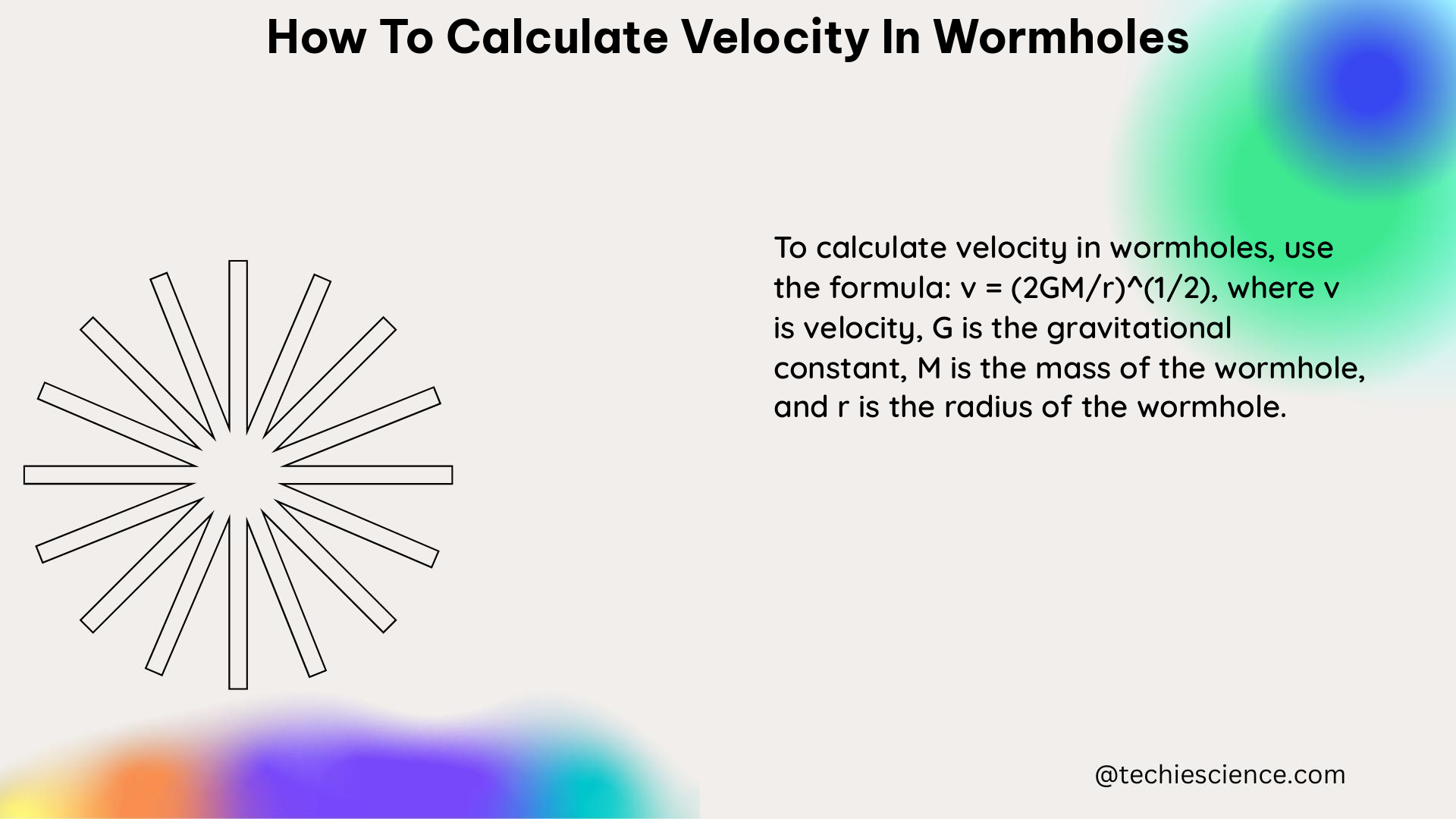Calculating the velocity of an object passing through a wormhole is a complex task that requires a deep understanding of the unique properties of these hypothetical structures. In this comprehensive guide, we will explore the various factors and equations involved in determining the velocity in the context of traversable wormholes.
Understanding Distance and Velocity in Wormholes
In the presence of wormholes, the traditional concepts of distance and velocity become more complex. The distance between two points can no longer be defined uniquely, as there might be multiple paths between them. Similarly, the velocity of an object passing through a wormhole can be ambiguous, as it could be measured differently depending on the frame of reference, whether it’s an external observer or an observer traveling through the wormhole.
Velocity Calculation in Traversable Wormholes

In the context of traversable wormholes, the velocity of an object passing through the throat is given by the proper time and/or the proper distance of travel through its throat as measured by space travelers. The equations involved in this calculation are as follows:
- Proper Time of Travel:
The proper time of travel as measured by space travelers going through the wormhole is given by:
ΔT = ∫(γ(v/c) dX)
where: γ = [1 - (v/c)^2]^(-1/2)is the Lorentz factorvis the velocity of the objectcis the speed of light-
dXis the element of proper distance through the wormhole throat -
Proper Distance of Travel:
The proper distance of travel as measured by the space travelers is:
ΔS = √(ΔT^2 * c^2) -
Velocity Measurement by Remote Static Observers:
Remote static observers watching the space travelers go through the wormhole will measure their travel time and distance as:
Δt = ∫(γ(v/c)^(-1) dX)
ΔX = √(Δt^2 * c^2)
where the integration is taken over the same limits as the proper time and distance calculations.
Quantum Computer Simulation of Wormholes
The recent quantum computer experiment that simulated a wormhole provides a unique perspective on the concept of velocity in these structures. The researchers looked for a peak in the data that represents a difference between two cases:
- If they see the peak, it means qubit rotations that are dual to negative-energy pulses are allowing qubits to teleport, indicating the presence of a wormhole.
- Rotations in the opposite direction, which are dual to pulses of normal, positive energy, don’t let qubits through and instead cause the wormhole to close.
This experiment demonstrates the complex nature of wormholes and the challenges in measuring the velocity of objects passing through them.
Additional Considerations
When calculating the velocity in wormholes, it’s important to consider the following factors:
- Frame of Reference: The velocity of an object can be measured differently depending on whether it’s observed from the perspective of an external observer or an observer traveling through the wormhole.
- Wormhole Geometry: The specific geometry and properties of the wormhole, such as its size, shape, and curvature, can also affect the velocity calculations.
- Gravitational Effects: The presence of strong gravitational fields near the wormhole can influence the velocity of objects passing through it.
- Quantum Effects: At the quantum level, the behavior of particles and energy within the wormhole may introduce additional complexities in the velocity calculations.
Conclusion
Calculating the velocity in wormholes is a complex and challenging task that requires a deep understanding of the unique properties of these hypothetical structures. By considering the proper time and distance of travel, as well as the frame of reference and other factors, physicists can develop a more comprehensive understanding of the velocity of objects passing through wormholes.
The recent quantum computer experiment provides a unique perspective on this concept, demonstrating the potential for simulating wormholes and observing the behavior of particles within them. As our understanding of wormholes continues to evolve, the ability to accurately calculate velocity in these structures will become increasingly important for advancing our knowledge of the universe and the possibilities of interstellar travel.
References
- Traversable Wormholes, Stargates, and Negative Energy: https://www.dia.mil/FOIA/FOIA-Electronic-Reading-Room/FileId/170048/
- What is distance and velocity regarding to wormholes?: https://physics.stackexchange.com/questions/158611/what-is-distance-and-velocity-regarding-to-wormholes
- Physicists Create a Wormhole Using a Quantum Computer: https://www.quantamagazine.org/physicists-create-a-wormhole-using-a-quantum-computer-20221130/

The lambdageeks.com Core SME Team is a group of experienced subject matter experts from diverse scientific and technical fields including Physics, Chemistry, Technology,Electronics & Electrical Engineering, Automotive, Mechanical Engineering. Our team collaborates to create high-quality, well-researched articles on a wide range of science and technology topics for the lambdageeks.com website.
All Our Senior SME are having more than 7 Years of experience in the respective fields . They are either Working Industry Professionals or assocaited With different Universities. Refer Our Authors Page to get to know About our Core SMEs.